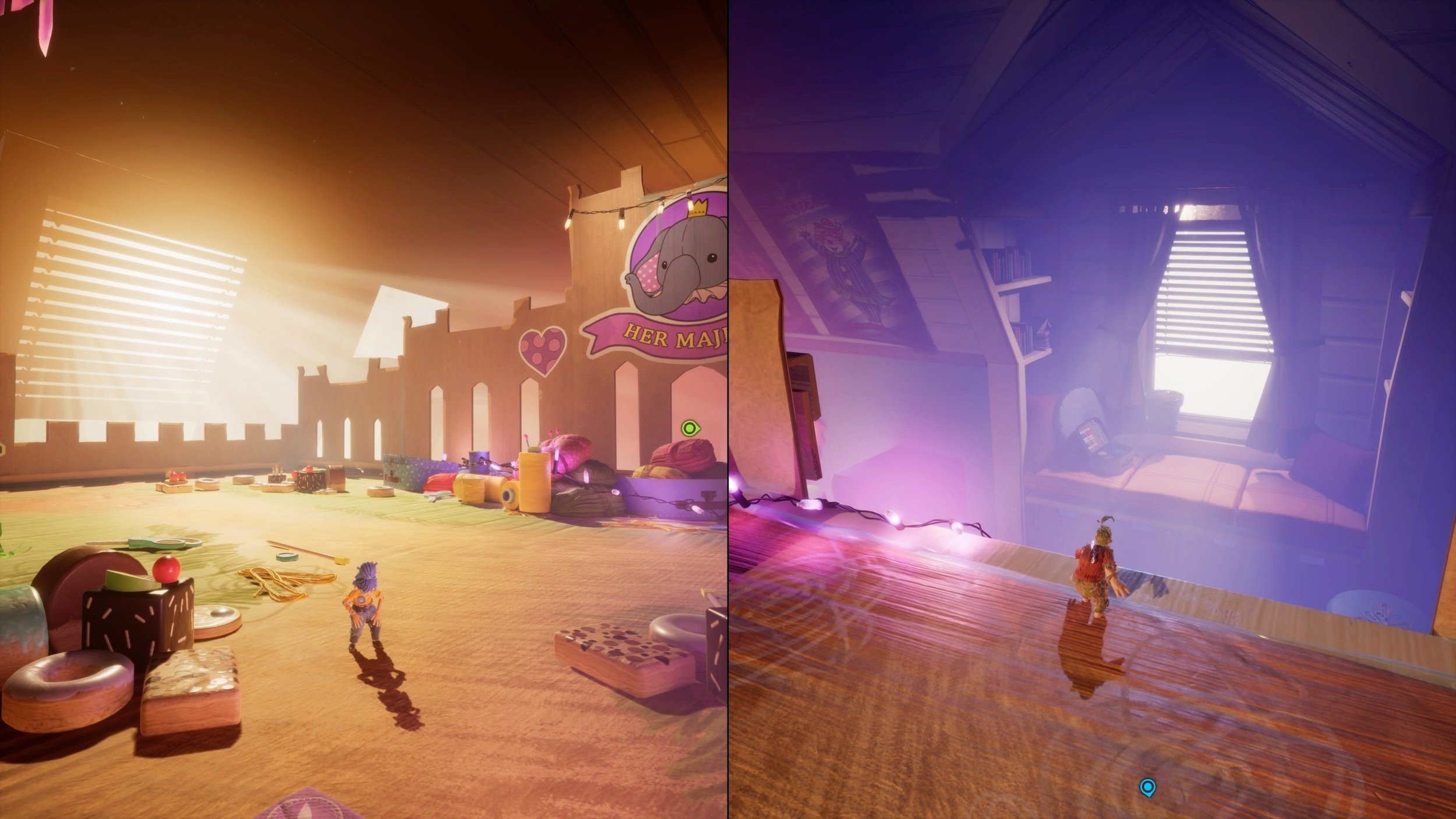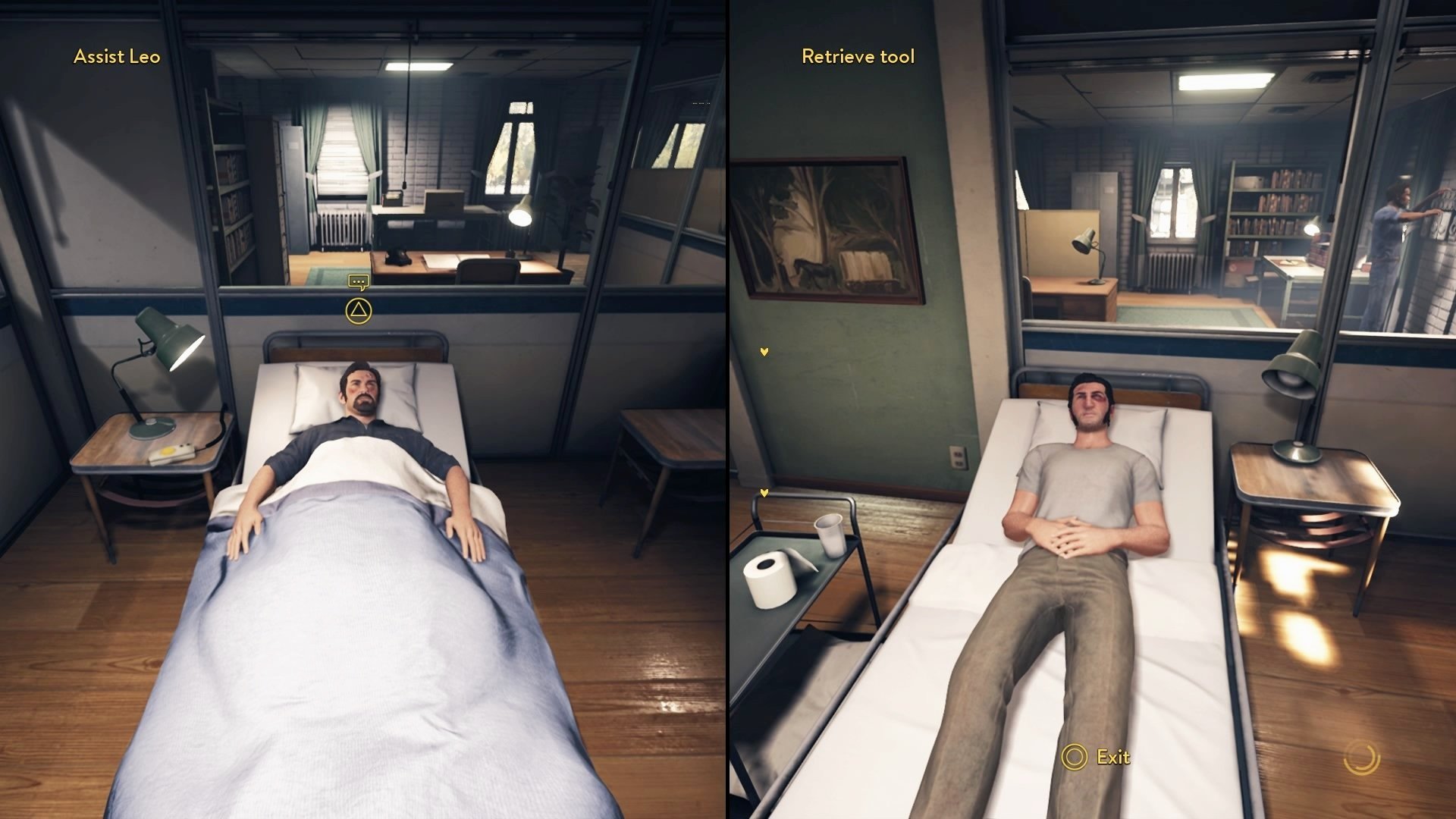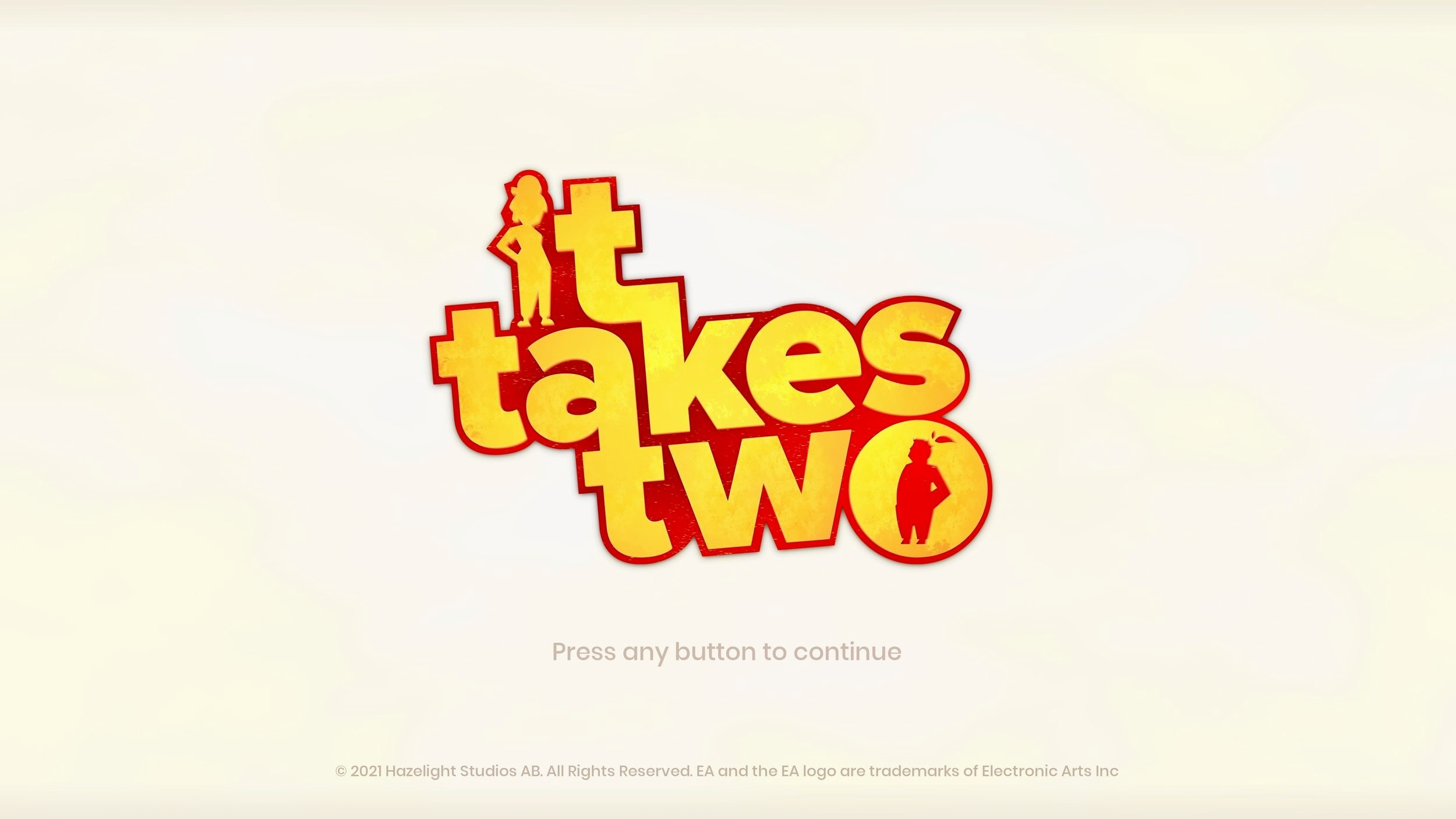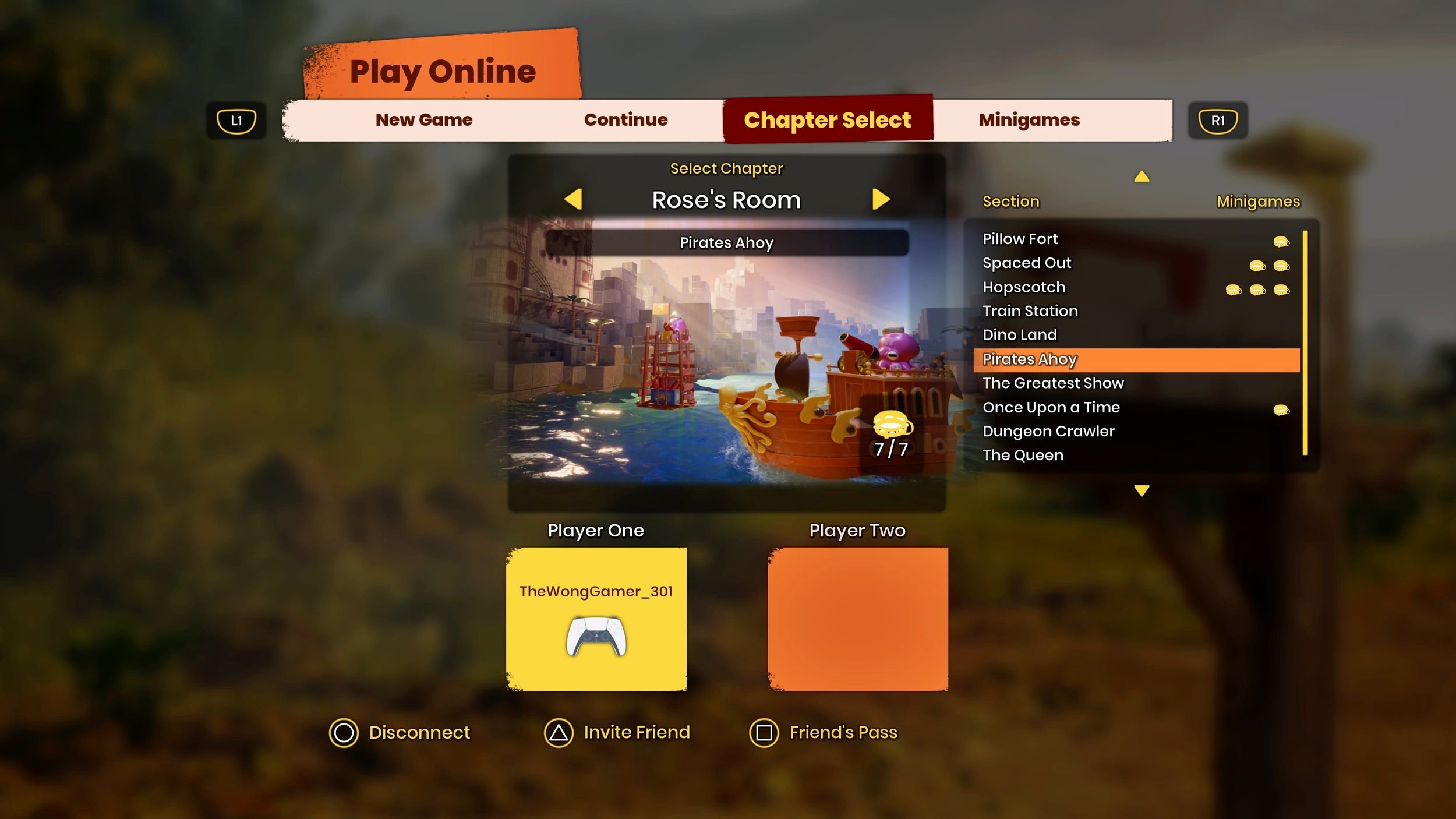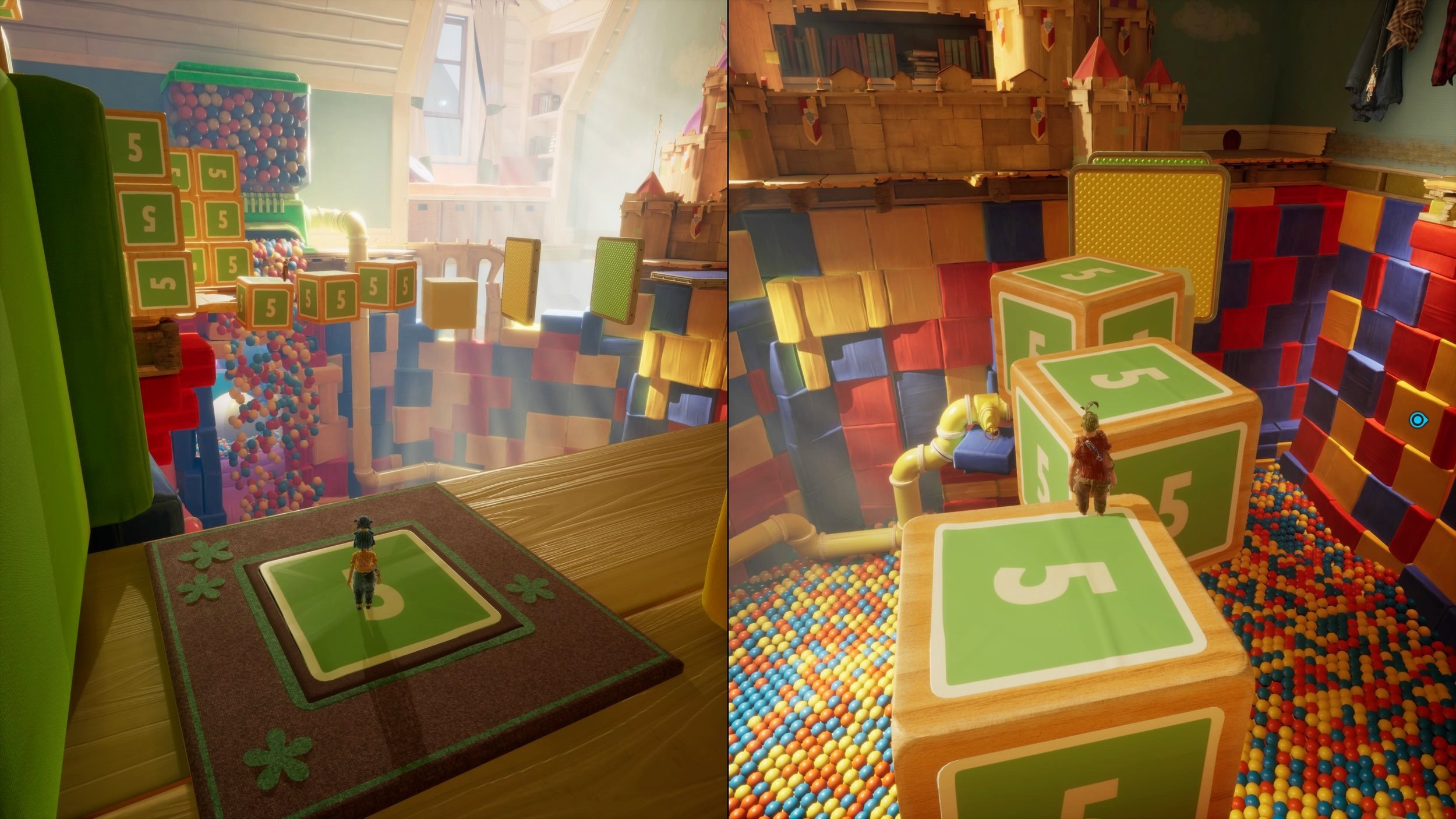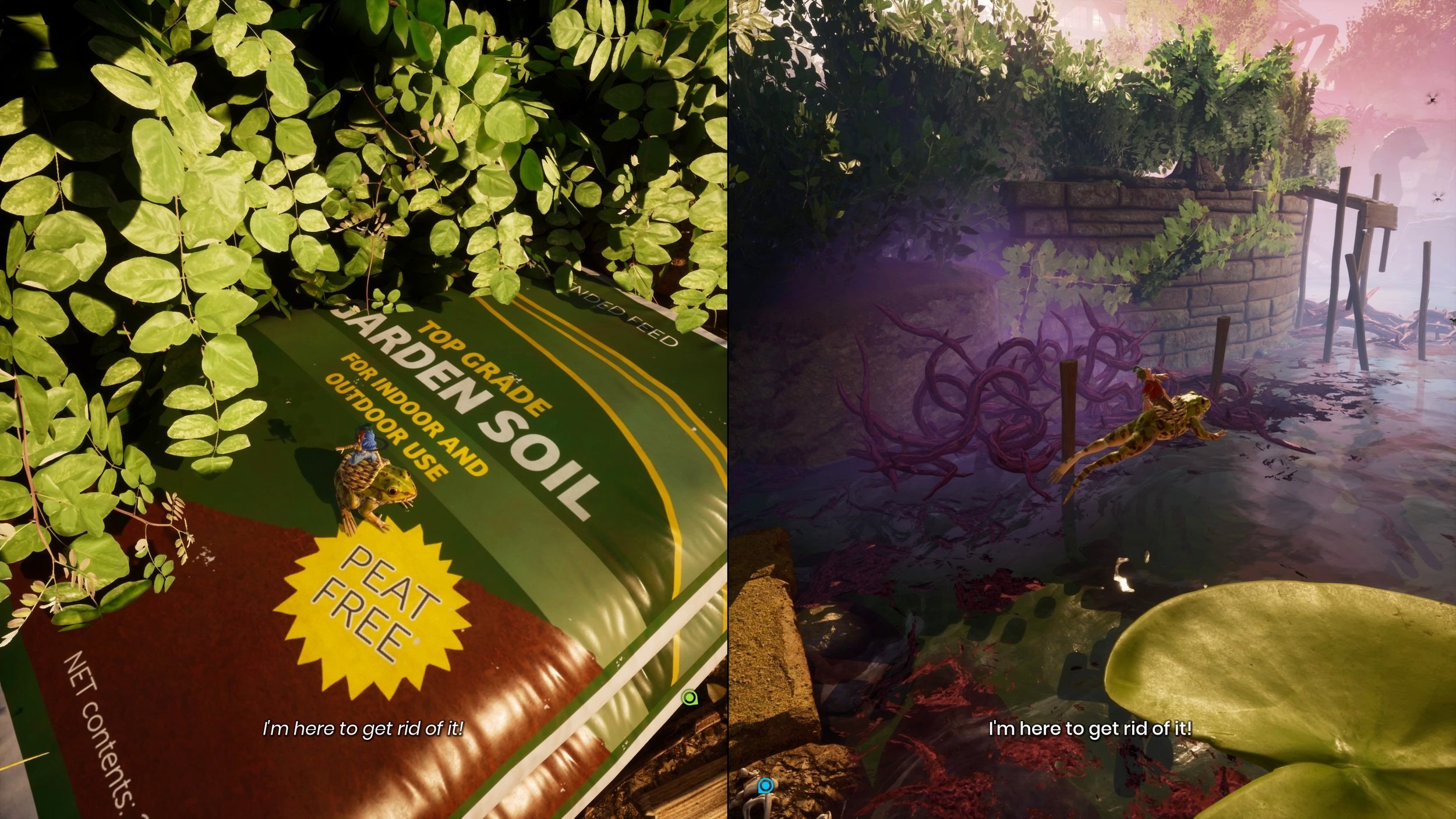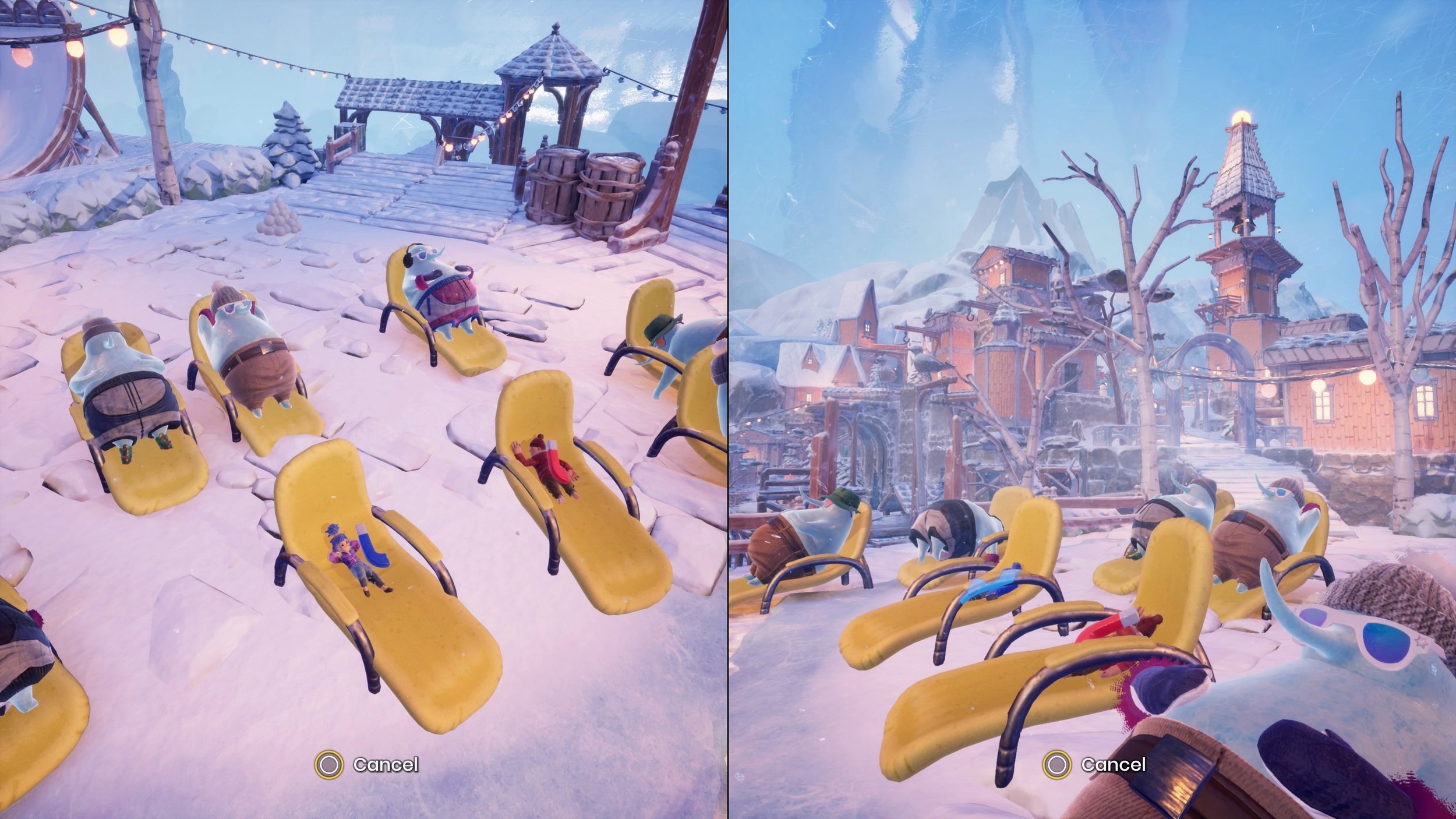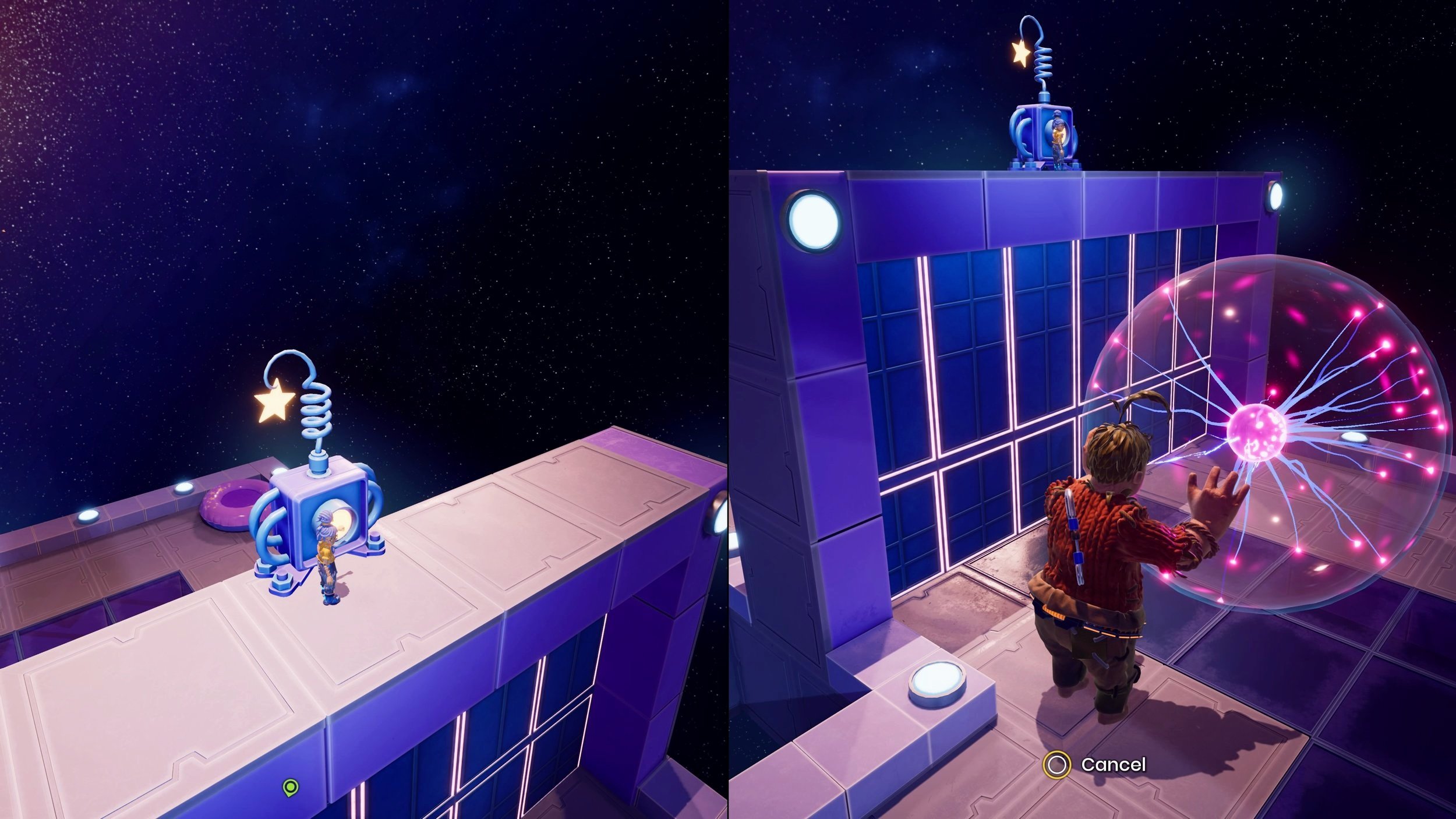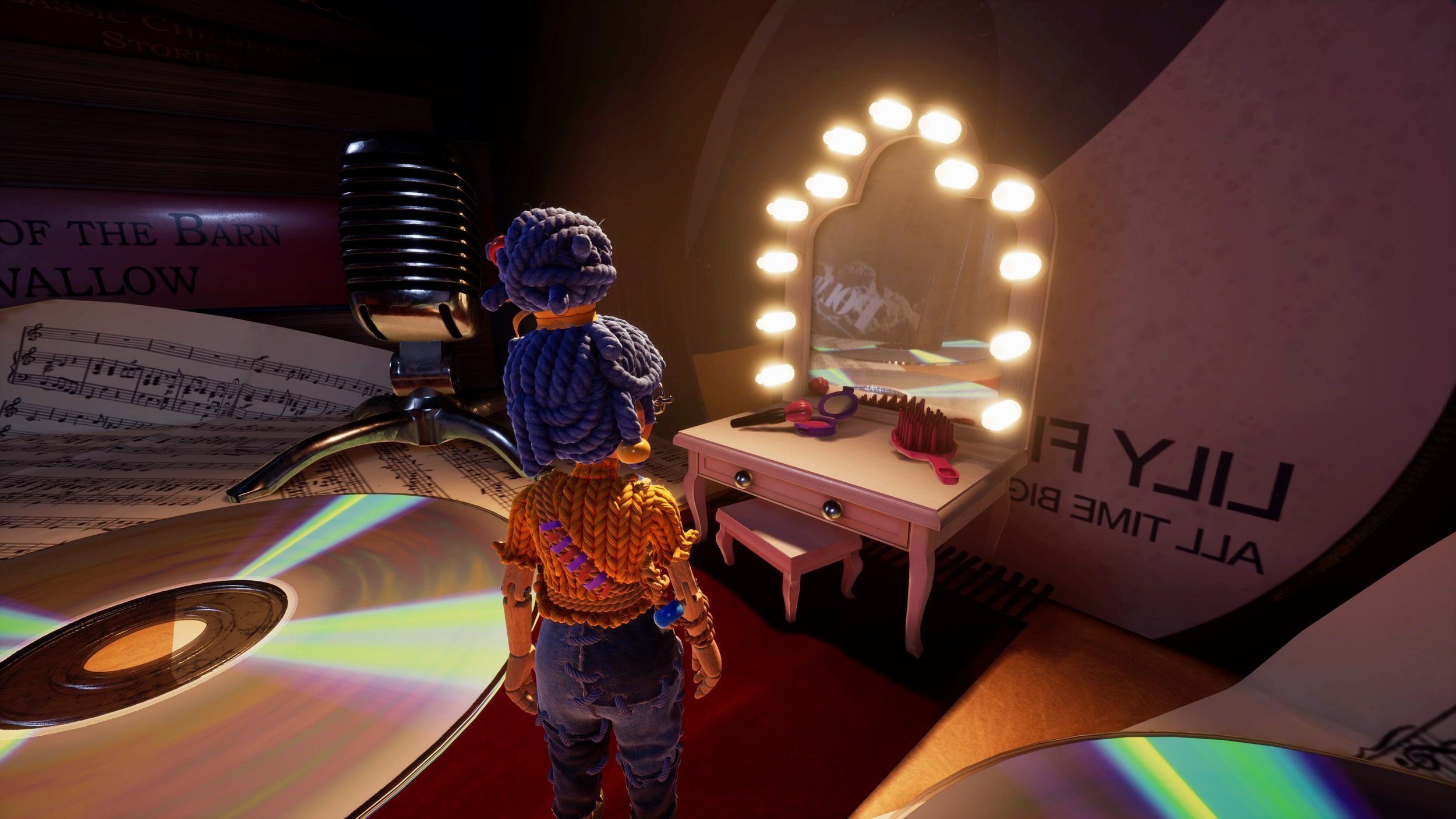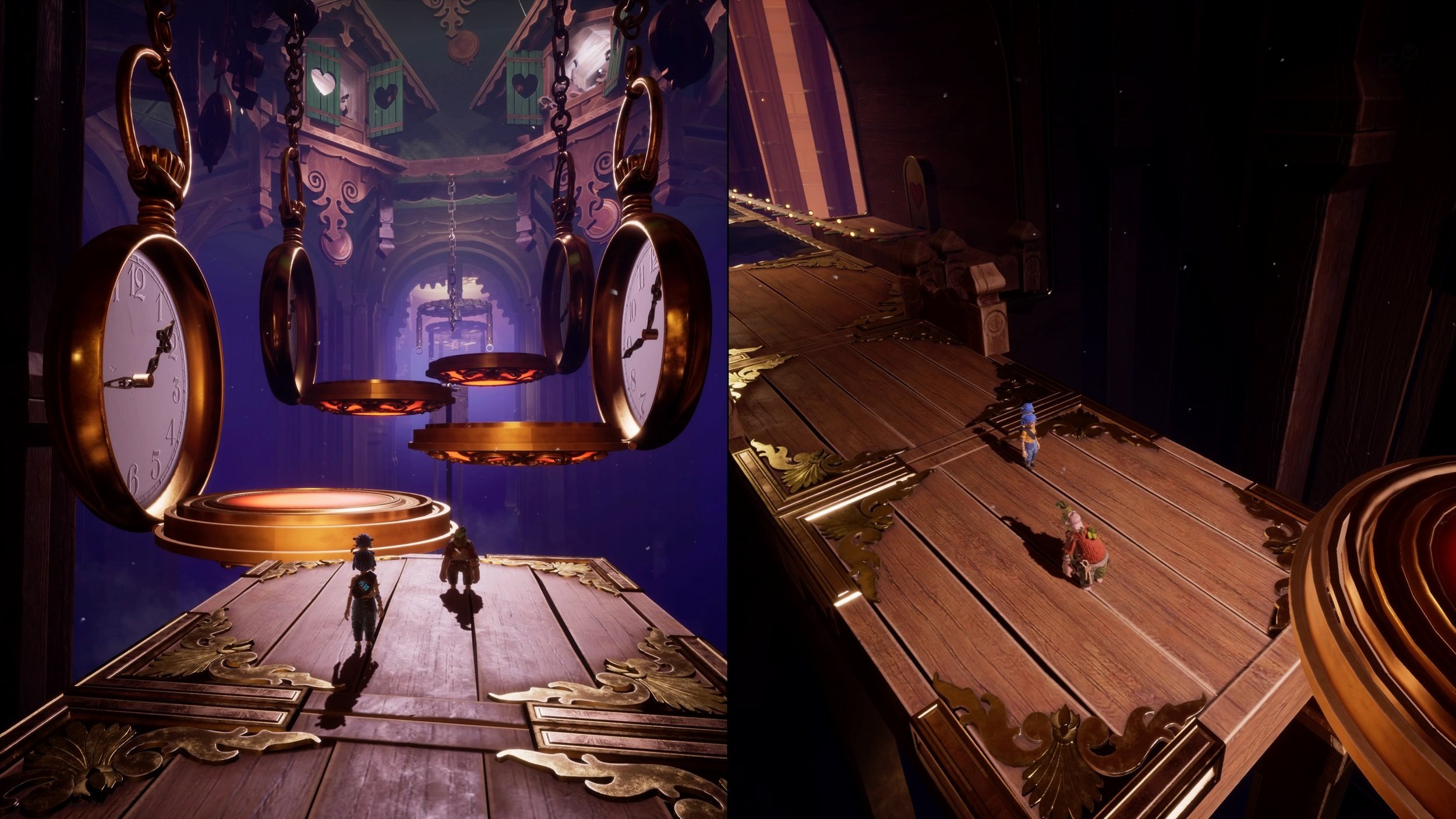It Takes Two: Single-Player Shine on a Splitscreen Rollercoaster
/In the world of action-adventure games, single-player games reign supreme.
This isn’t to say that multiplayer titles are unenjoyable - only that many gamers believe that single-player games provide the better gameplay experience overall. One head is better than two, so it would seem.
There are many arguments that support this position. Multiplayer games often feel more repetitive, single-player games deliver gripping narratives, and so on. Perhaps the most common is that the technical demands of multiplayer modes stop a game from impressing in the same ways as single-player games (with high framerates, detailed graphics and compelling narrative-driven campaign modes).
You need only look at the most critically-acclaimed action-adventure games of the last few years, like Horizon Zero Dawn (Guerrilla Games, 2017), Marvel’s Spider-Man (Insomniac Games, 2018) or The Last of Us Part II (Naughty Dog, 2020), to see that the descriptor ‘single-player’ has become synonymous with the action-adventure genre.
Hazelight Studios, headed by Swedish filmmaker (and Oscars tolerator) Josef Fares, is on a mission to buck this trend. Its debut title, A Way Out (2018), demonstrated that a multiplayer game could have all the trappings of a single-player action-adventure experience; a high framerate, photorealistic graphics and a thrilling narrative presented in a cinematic style.
Despite my issues with its final act (a subject for another article!), A Way Out is an excellent cooperative multiplayer game, and playing through it was a lifeline during lockdown in 2020.
However, as ambitious as A Way Out is, it was only the beginning for Hazelight.
It Takes Two (2021) adopts the same design philosophy as A Way Out, applying a single-player finish to an exclusively multiplayer experience.
Like A Way Out, It Takes Two is a cooperative action-adventure game and, with the exception of cutscenes and some short gameplay sequences, displays exclusively in splitscreen mode. It boasts a high framerate, breathtaking visuals and a narrative-driven campaign mode.
But while the gameplay of A Way Out is designed to fit within an action movie ethos, It Takes Two is less conservative and far more experimental, throwing wildly different gameplay types at the wall - only for everything to stick.
It Takes Two tells the story of Cody and May, a married couple who have made the difficult decision to divorce. They explain the decision to their daughter, Rose, who copes by acting out her parents’ reconciliation with her handmade dolls.
She petitions a mysterious book, Dr. Hakim’s Book of Love, to get her parents back together and unbeknown to Rose, the book magically comes alive and traps the souls of her parents inside of the dolls.
As Cody and May try desperately to return to their human bodies, the book (now calling itself ‘Dr. Hakim’) drops them into increasingly dangerous situations in an effort to teach them collaboration and mutual understanding.
Like in A Way Out, It Takes Two plays out as a series of large linear levels that each form one ‘area’ of the game.
In each area, Cody and May are tasked by Dr. Hakim with learning a particular lesson which, conveniently, they learn by defeating a boss or reaching the end of the area.
Given their length, areas are broken up into chapters that are indicated during gameplay by checkpoints or cutscenes. A handy chapter select screen allows you and your partner to continue from or replay any unlocked chapter within any area.
The fairytale tone of It Takes Two stands in sharp contrast with the grittiness of A Way Out. But this frees It Takes Two to send players on a rollercoaster ride through a world of supermassive locations.
Cut down to the size of dolls, Cody and May find that their family home – including the backyard, the bedroom and the attic – is a dangerous gauntlet that they must now cooperate to get through unharmed.
Areas are set in different locations and each chapter showcases a small section of that location. For example, while travelling through the Garden area, you’ll spend one chapter hopping across Cody’s prized frog pond.
Unfortunately, the narrative of It Takes Two does have problems. Although Cody and May start their doll-sized adventure tackling the backyard, Dr. Hakim later sends them to less grounded locations, like outer space and the inside a snow globe. While certainly imaginative locations with inventive gameplay and stunning visuals, these levels can detract from that sense of journeying through the family home.
The characters are also not as endearing as the writers perhaps believed; Dr. Hakim in particular got an audibly annoyed groan out of me during each of his many appearances!
The wonderfully eclectic environments of It Takes Two are accompanied by equally eclectic gameplay mechanics. Again, everything that the game tries seems to stick! In each area, you’ll confront a blend of platforms, puzzles, boss encounters and minigames.
In fact, while advertised as an action-adventure game, platforming is the backbone of this experience. Cody and May are equally capable of performing typical platforming actions like double-jumping, dashing and ground pounding. They can also swim, swing and grind along rails. In that sense, Cody and May play identically.
But while puzzle-platforming forms a large part of what you do in It Takes Two, this basic move set underpins a suite of ingenious character-specific abilities.
At the beginning of each area, Dr. Hakim endows Cody and May with a new ability that they each must master. These abilities are unique to Cody and May individually but are also complementary. Both are needed to solve puzzles and defeat certain bosses.
For example, Cody gains the power to alter his size (allowing him to weigh down platforms or access tiny crawl spaces) while May gains the power to walk on walls and ceilings (allowing her to reach high places).
There are few limits on these abilities but Cody and May will only hold an ability for one particular area. Once you move on, you and your partner must learn to use a completely new pair of abilities.
It’s a shame that these powers never appear again once they’re gone, but you’ll likely spend an hour or two in each area - more than enough time to master each ability. But for the time that you do have them, your abilities become a temporary game mechanic, being used often and in surprising ways to facilitate cooperative gameplay.
The most enjoyable abilities are those that complement each other without feeling too situational.
For example, in an early level, Cody receives a magic quiver of flying nails that he can embed into walls and then recall, Mjolnir-style. Meanwhile, May controls a talking hammer that she uses to swing from the nails and clear large gaps. It makes for engaging gameplay as you plan with your partner the timing of May’s swings, the sequence and location of Cody’s placing and recalling of nails, and so on.
Unfortunately, not all abilities achieve this kind of integration (particularly those used in the final areas of the game), but certainly none are unenjoyable.
It Takes Two varies its gameplay further still with sequences that pay homage to other genres.
Typically, these sequences are deployed tastefully and in keeping with the theme of the current area.
The mystery of a pillow fort is realised as an isometric dungeon crawler, with elemental attacks for Cody and May, health bars and damage statistics. The introspective isolation of a dressing room is portrayed by a third-person, over-the-shoulder perspective typically associated with an interactive drama. There’s even a sequence that plays out as a match from a fighting game.
Though short, these sequences break up the platforms and puzzles nicely and, as an aside, it seems clear that Hazelight had a tonne of fun coming up with them!
It Takes Two doesn’t offer much in the way of dedicated additional content upon finishing the game. However, there is a healthy amount of content that is worth going back to see if you missed it during your first playthrough.
If you and your partner stuck with the same characters for your entire playthrough, you can swap characters and replay the game. Cody and May have unique abilities throughout, so you’ll technically be playing with a ‘new’ set of powers. At the very least, you’ll get to see how your partner experienced the game!
It Takes Two is surprisingly lengthy, taking between 13-15 hours to complete, so to avoid burning out it may be best to reserve replays for only your favourite levels.
In place of coins, fruits or bolts - or as Fares might say, ‘shiny sh*t’ - each area has a few ‘collectible’ minigames that you and your partner can find off the beaten path.
Unlike the rest of the game, these minigames are competitive and vary in complexity from a simple game of Tug of War to a precarious round of Laser Tennis.
The bulk of these minigames are easy enough to find, but some are well-hidden and may require the help of a guide. A tally on the chapter select screen keeps track of how many minigames you have yet to find in a particular chapter. But to be clear, there is no incentive offered for locating these other than engaging your partner in some friendly competition mid-level!
You can also return to specific chapters to fully explore the more open parts of the game. In certain areas, like the Snow Globe, one chapter is set aside as a spot for players to rest in and explore before continuing their journey.
These spots are large and playground-like, not unlike the open levels of Super Mario Odyssey (Nintendo EPD, 2017). There’s space to practice using your abilities and also structures and non-playable characters to see. If you look hard enough, you’ll likely also find some diversion that you can interact with, like a giant painting studio or a day spa run by insects.
As with the minigames, these diversions are only necessary to unlock achievements, but it should be illegal to ignore the care that has clearly gone into them. In fact, my biggest gripe with It Takes Two is probably that is has no Photo Mode to take snapshots of these environments!
If A Way Out was not proof enough, It Takes Two shows beyond the shadow of a doubt that a multiplayer action-adventure game can be every bit as impressive as a high-profile single-player game. Hazelight Studios has outdone itself with a game that drips with charm and changes things constantly while holding fast to truly cooperative gameplay.
If you have a friend, family member or significant other that you can play with locally or online, you owe it to yourselves to enjoy the wonderful ride that It Takes Two will send you on.
It Takes Two was developed by Hazelight Studios and is published by Electronic Arts. It released on March 26, 2021 and is available on PlayStation 4, PlayStation 5, Xbox One, Xbox Series X, Xbox Series S and PC. This game was reviewed on PlayStation 5.

